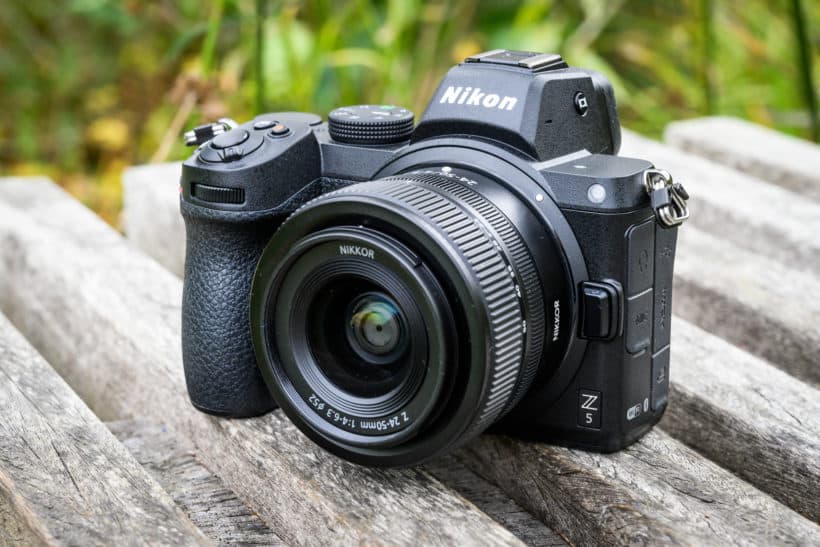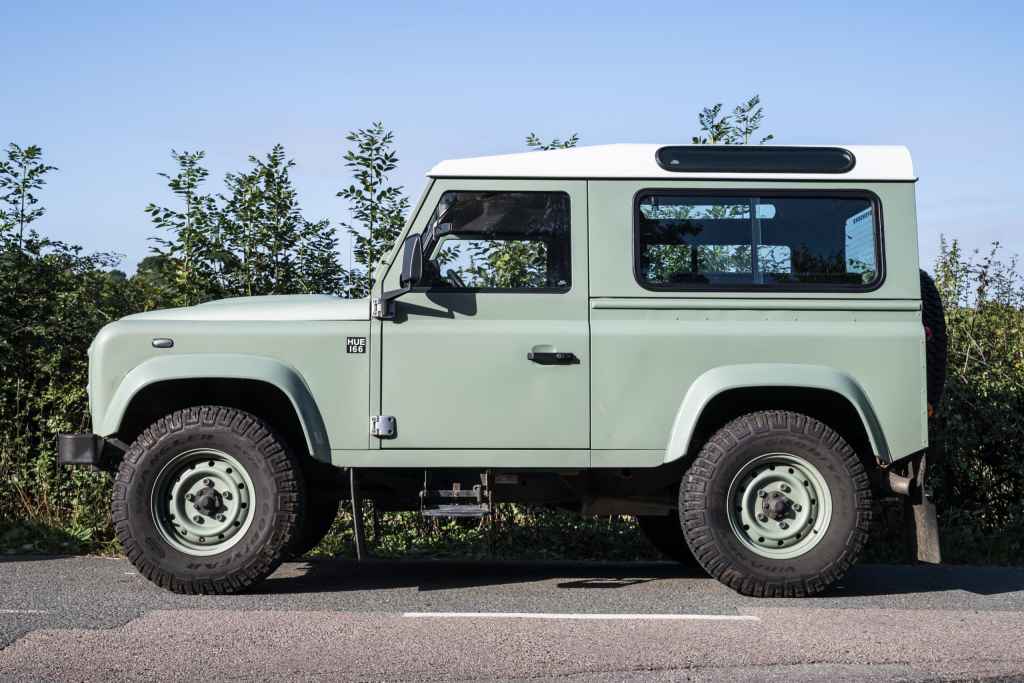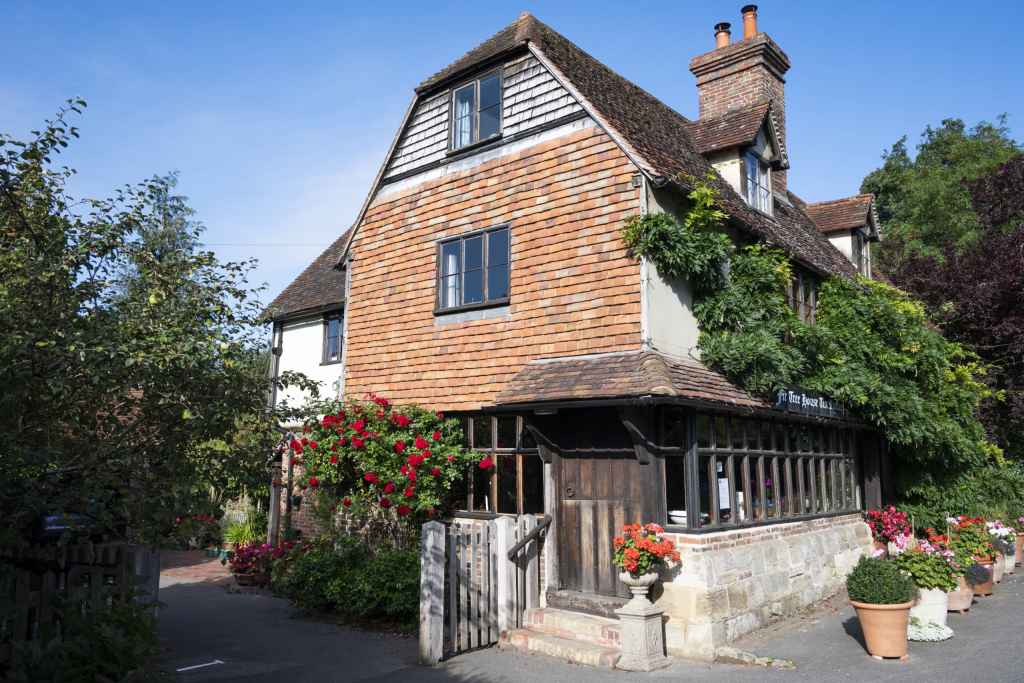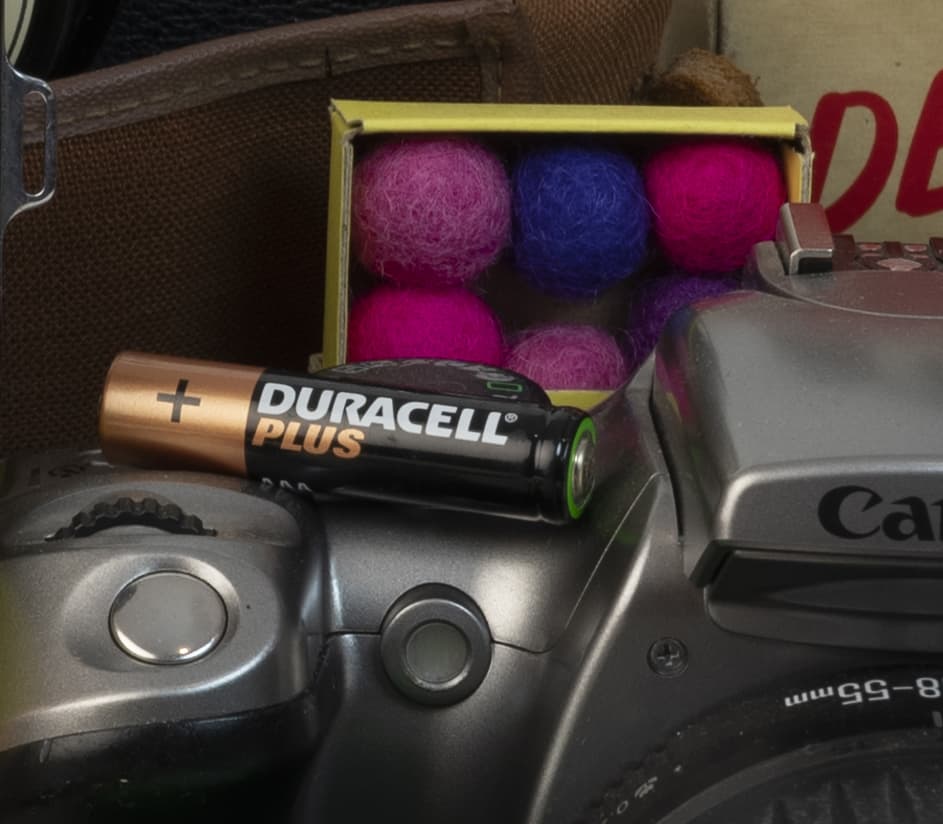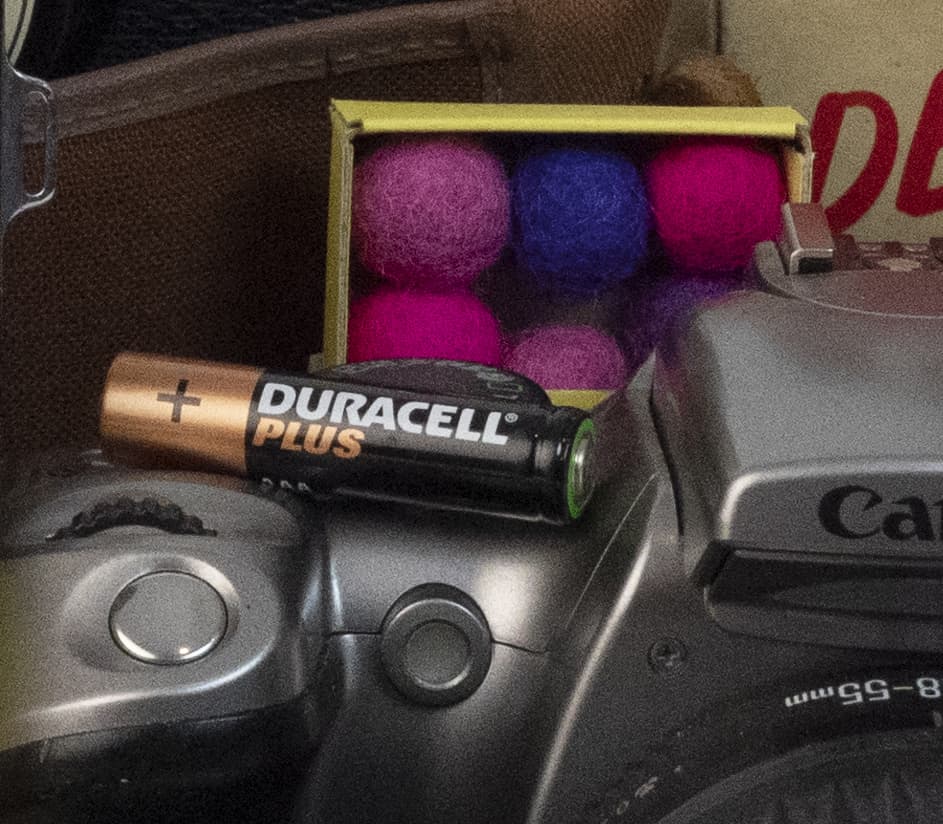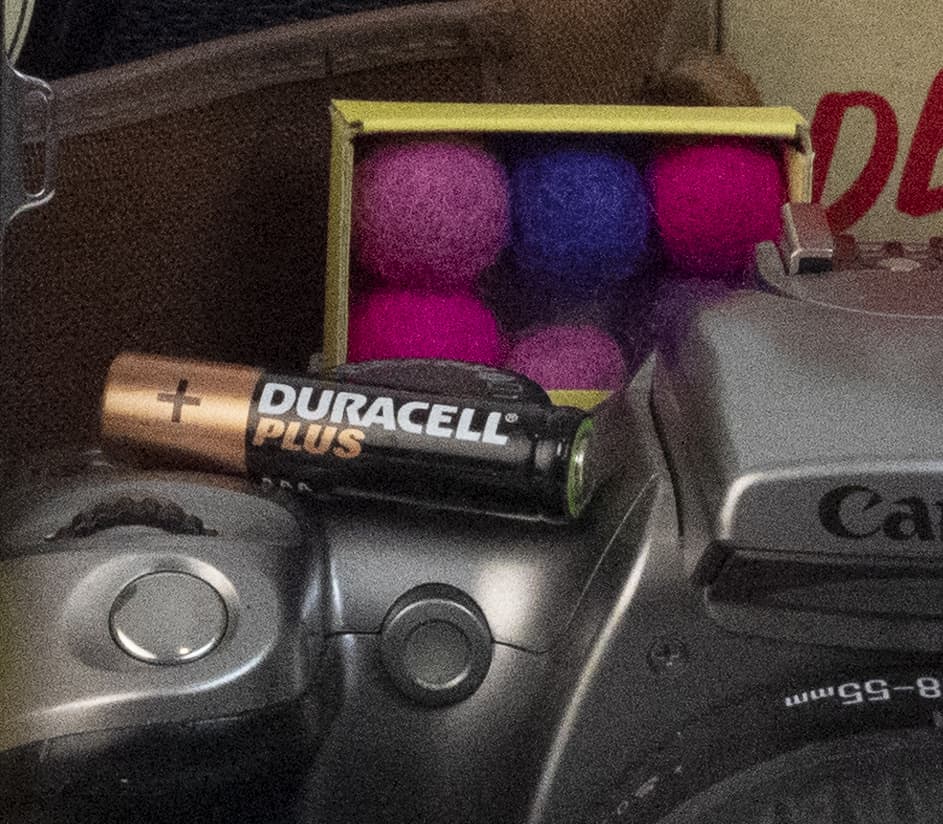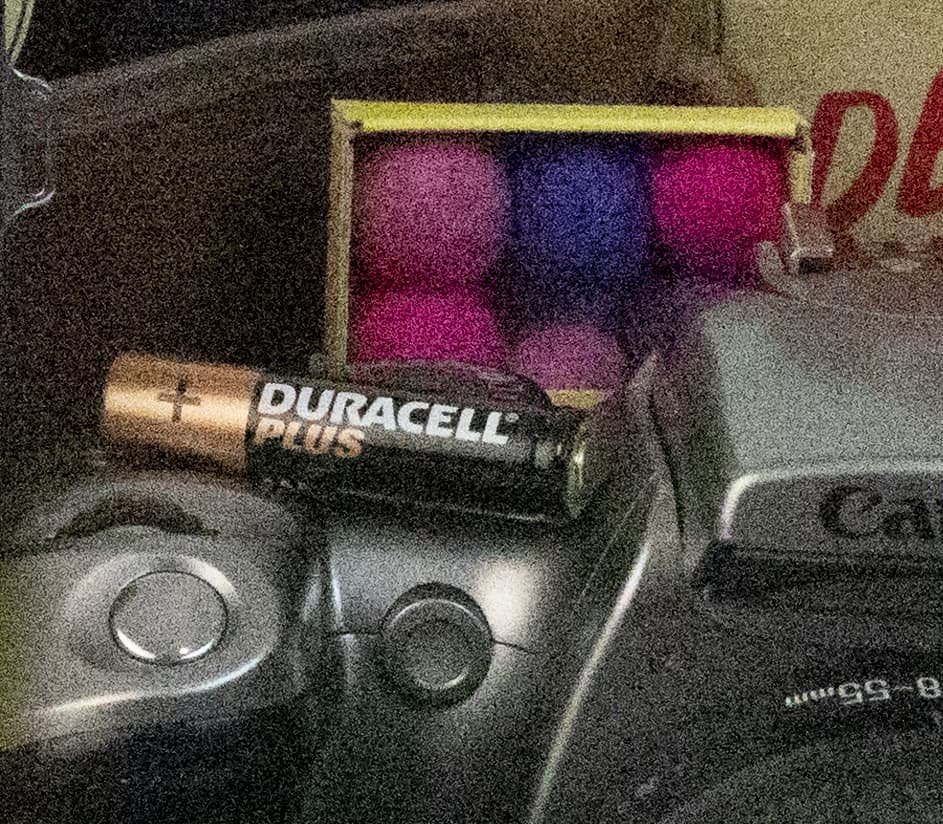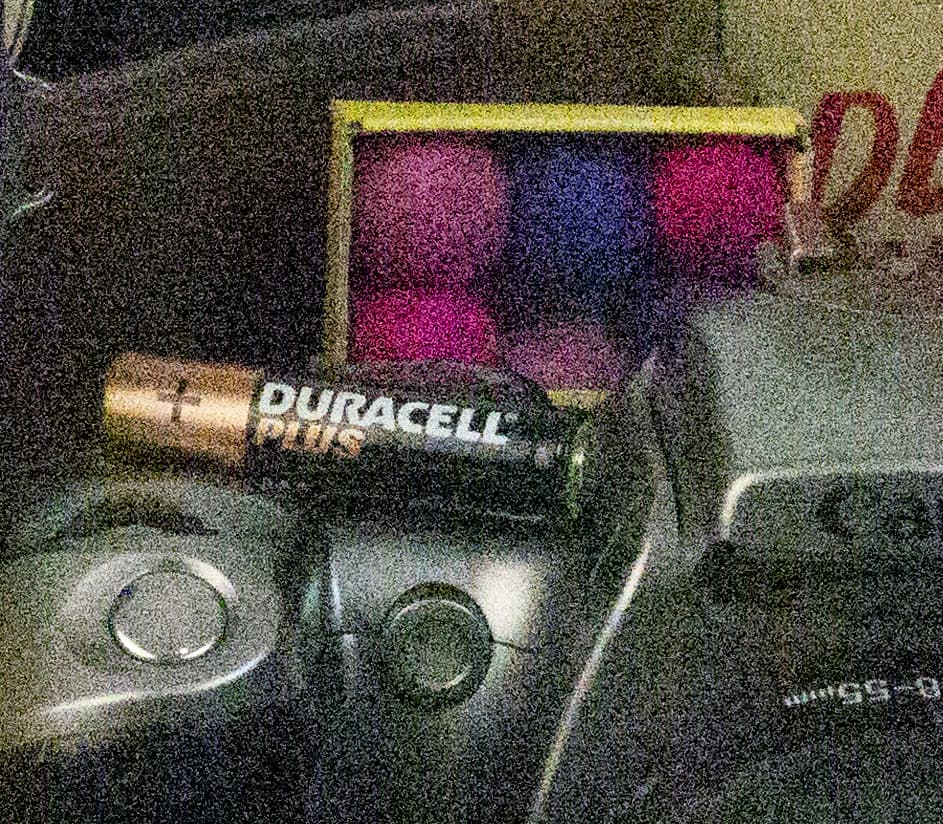Amateur Photographer verdict
Far more advanced than its “entry level” billing – and still a capable, reliable full-frame camera of quality feel, decent specs, and ever-expanding range of good lenses. Fantastic at its price point.- Has the excellent handling of the Z6 II & Z7 II
- Performs well with F-mount SLR lenses (via FTZ adapter)
- Great build quality for its price
- First full-frame Z-series model with dual SD card slots
- 1.7x crop applied when shooting 4K (UHD) video
- 24-50mm kit zoom is likely to be quickly outgrown
- Produces cool-looking images in AWB mode in sunlight
- 4.5fps continuous burst shooting shows its age
The Nikon Z5 is the most affordable full frame Nikon mirrorless camera, designed as an entry-point for those upgrading to the larger sensor size. And it does have a lot of things going for it. The camera is fully weather-sealed and boasts a sophisticated 5-axis in-body image stabilisation system. Its sensor can reach ISO 51,200 natively, and its 3,680k-dot OLED electronic viewfinder (inherited from the original Z6) is a thing of beauty. The price is also affordable for a full frame mirrorless camera, at around $999 / £1,149.
It looks a lot like its premium cousins in the series, the high-resolution Nikon Z7 II and the all-rounders Z6 II and Z6III. However, it’s somewhat stripped-down compared to those cameras and their predecessors, with a 24.3MP full-frame CMOS sensor that isn’t backside-illuminated. It’s missing a top LCD plate, and a glance at the specs below may give you the feeling that some of them are a little pedestrian. Just 4.5fps burst shooting? A crop on 4K video?
Nikon Z5 at a glance:
- $999 / £1,149 body only ($1,200 / £1,499 with 24-50mm kit lens)
- 24.3MP full-frame CMOS sensor
- EXPEED 6 image processor
- 5-axis in-body image stabilisation (IBIS)
- 0.5in, 3,680k-dot OLED EVF
- 3.2inch tilting touch-screen (1040K)
- 4.5fps burst shooting
- 4K, 30p video recording (cropped)
- Dual SD card slots
Nikon released the Nikon Z5 in 2020 as an entry-level full-framer, contending with the likes of the Canon EOS RP, Sony A7 III and the Panasonic Lumix S5. Since then, though, the EOS RP’s price has dropped thanks to the arrival of the similar Canon EOS R8. Sony took the wraps off its Sony A7 IV, and Panasonic received accolades for the shiny new Lumix S5 II (and Lumix S5 IIX, too). As for the Nikon Z5, a Mark II version remains a rumour. Typical camera timelines suggest that one is due; for now the Z5 soldiers on as it is.

Good news for prospective Z5 buyers is that the range of Nikon Z-Mount lenses has continued to expand. There are useful mid-priced all-rounders like the Z 24-200mm f/4-6.3 VR and spectacular premium primes like the Z 85mm f/1.2 S.
Nikon released the Z5 two years into its mirrorless journey in 2020. Five years later, the Nikon Z5 II was announced in April 2025, with subject detection autofocus, Expeed 7 processor and a fully articulating screen to name a few updates. This release pushed prices down for the Z5, to around $1200/£1000, making it a great option for the more budget-conscious.
Lens features
By 2020, Nikon had developed an extensive range of Nikkor Z lenses in a short space of time. To attract new and budget users to the Z5, the company needed to release it with an affordable kit zoom. The kit lenses on full frame cameras are typically quite large, too, so they may have intended this 2x kit zoom as a compact alternative to typical full frame camera kits.

The Z 24-50mm f/4-6.3 lens, which you can purchase with the Z5 or separately, is no frills with a fairly restrictive focal length; yet is lightweight and has a retractable zoom mechanism to keep it as compact as possible when you have limited space.
Like the Z6 II and Z7 II, the Z5 shares the same large-diameter, short back-focus lens mount that has a flange distance of 16mm from lens to sensor. To keep Nikon DSLR holdouts happy, you can pair and use the Z5 with F mount (FX) lenses via Nikon’s FTZ adapter, and a subsequent firmware update has made the Z5 compatible with Nikon’s newer FTZ II version.
Resolution
Though the pixel count is similar to the Z6 II, the Z5’s sensor is different. The Z5’s 24.3-million-pixel sensor is a standard CMOS chip, whereas the Z6’s has a back-illuminated structure, which should see it deliver a slightly better performance in low light – something I’ll cover in more detail later. The chip features an anti-aliasing filter like the Z6, and shoots across the same native ISO sensitivity range of ISO 100-51,200, however it doesn’t permit shooting as high as ISO 204,800.

Shutter speed
Enter the extended ISO settings and you’ll find it shoots between ISO 50-102,400. Given that it uses the same EXPEED 6 image processor as the original Z6 and handles similar data throughput, you could be mistaken for thinking it rattles out a consecutive burst of shots as quickly; but this isn’t the case. Whereas the Z6 can fire off a burst at a brisk 12fps (14fps for the Z6 II), the Z5 shoots a continuous burst at a rather more pedestrian 4.5fps.
The silent shooting mode is invaluable for inconspicuous shooting, and automatically engages the electronic shutter. Unlike some mirrorless cameras, though, you can’t set the shutter speed beyond its maximum of 1/8000sec.
The Z5’s electronic first-curtain option restricts the highest shutter speed, a peculiarity we also observed on the original Z6 and Z7. While it’s great to have this to eradicate blurring caused by shutter shock, you’d need to disable it in order to shoot faster than 1/2000sec.

Image stabilisation
To counteract shaky handheld movements, the Z5 incorporates the same 5-axis in-body image stabilisation (IBIS) system first seen on the Z6 and Z7. This is great to see on a camera at this level and gives it an advantage over rivals that rely entirely on optical stabilisation built into the lens – Canon’s EOS RP being one such example. The IBIS system lets users shoot sharp shots up to 5 stops slower than would otherwise be possible.
Compared to the usual pitch and yaw correction that’s provided by in-lens optical stabilisation, IBIS additionally corrects for rotation around the lens axis, which helps when shooting hand-held video or attempting shots using slow shutter speeds. In addition, it corrects left-right and up-down movements, which can have a significant impact when shooting subjects and details from close distances.
Nikon have paired an F-mount (FX) lens with built-in vibration reduction (VR) along with Nikon’s FTZ adapter, allowing the in-body and in-lens systems to work together. The lens corrects pitch and yaw, with IBIS compensating for rotation around the lens axis.

Autofocus
The Z5’s hybrid autofocus system is similar to the Z6 II’s. It arranges 273 phase detection AF points across 90% of the frame area, and there is the option to select every other point for faster AF point repositioning across the frame. The detection range isn’t as extensive as the Z6 II’s though. It covers -3EV to 19EV when low-light mode is enabled from the autofocus custom setting menu and -2EV to +19EV when it’s turned off.
Elsewhere, users get a fine selection of AF-area modes, including single-point AF, the choice of two wide-area AF modes (large and small) and an auto AF mode that ties in with face detection and subject tracking.

Recording video
High-resolution video is available in 4K (UHD) resolution at up to 30p. The Z5 does enforce a 1.7x crop, unlike the Z6 II that records 4K (UHD) footage using the full width of the sensor. This means you’re unable to shoot 4K video wider than 41mm using the 24-50mm kit lens. This might not be wide enough for some, and even with a wide-angle lens like the Z 14-30mm f/4 S, the widest you can shoot at is 24mm.
You can switch the resolution to Full HD 1080p to record movies without a crop at frame rates up to 60p, but again, the Z6 II has the advantage as it is better suited to slow motion recording with frame rates up to 120fps. Microphone and headphone sockets are provided one above the other to the side of the HDMI, USB-C and remote ports.
Battery charging
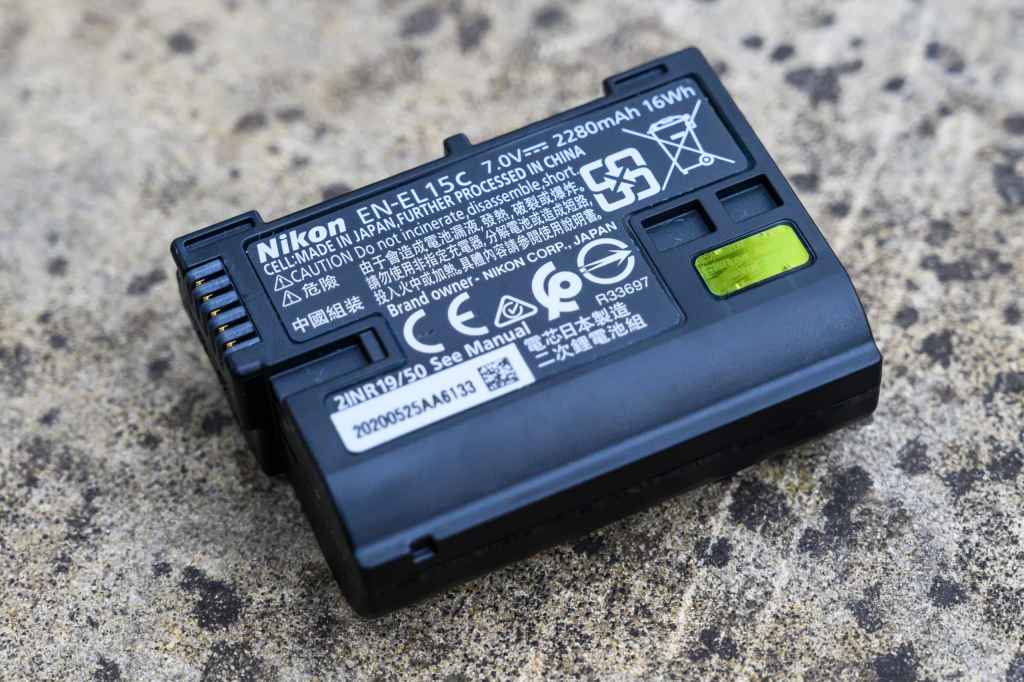
The Z5 accepts Nikon’s latest EN-EL15c rechargeable battery. It is compatible with older EN-EL15 batteries too, but users won’t get the same number of shots per charge (470 using the LCD and 390 shots with the EVF) as they will with the EN-EL15c. USB power delivery is also provided. This gives you a useful way to top up the battery between shooting and power the Z5 whilst you turn it on and operate. Alternatively, you can buy the MB-N10 battery grip, which Nikon originally made for the Z6 but also fits the Z5. It accepts two batteries and increases battery life closer to 1000 shots, which should suffice for an average day’s shooting.
Focal points
Here, we take a quick look at a few of the Z5’s other features we’re yet to touch on.
- My Menu: The My Menu setting gives users the choice of customising their most frequently used menu settings into one area for quick and easy access. Adding and removing items from the My Menu is extremely easy to do – simply tap the Z5’s responsive touchscreen.
- Stills/Video switch: To record video you’re required to flick the stills/video switch that encircles the DISP button at the rear. Only when this has been done will you find that you’re able to start/stop video recording using the movie-record button on the top-plate.
- Image size: Users get the choice of three image sizes when the image area is set to FX. As well as Large (24MP), there are Medium (13.5MP) and Small (6MP) options. Set the image area to DX (applies a 1.5x crop) and you can set the image size between Large (10.3MP), Medium (5.6MP) or Small (2.6MP).
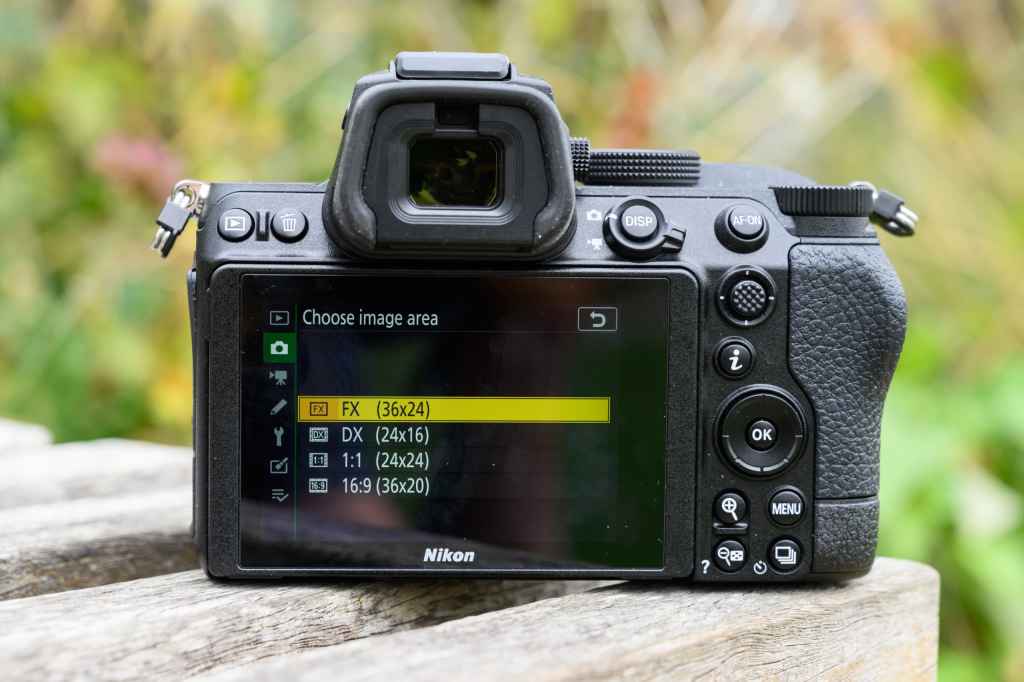
- Function buttons: The two Fn1 and Fn2 buttons around the lens mount are customisable and can be depressed using the middle finger. Set to default, Fn1 adjusts White Balance and Fn2 adjusts focus mode/AF-area mode in combination with using the front and rear command dials.
- Accessory terminal: The accessory terminal at the side allows users to plug in a wired remote shutter release cable such as Nikon’s MC-DC2. Alternatively, users can trigger the shutter wirelessly from a mobile device running Nikon’s SnapBridge app.
- Bluetooth: An always-on Bluetooth LE connection can be set up between the Z5 and your phone, enabling every picture you shoot to be automatically transferred to your phone. Selecting the 2MP mode helps speed up transfer times and saves on valuable storage space.
Build and Handling
So-called ‘entry-level’ cameras are generally perceived as lacking in build quality. By using cheaper materials, manufacturers cut costs in production and offer their cameras for considerably less than top-of-the-line models. The good news is that Nikon hasn’t cut any corners with the Z5. My first impression handling the camera out of the box was that the build quality upholds a similar feel and same level of robustness to the original Z6 and Z7.
Weather proofing
Despite being lower-end in the Z-series, it’s weather-sealed like its peers. This helps to protect dust and moisture penetrating the internals. Anyone who shoots regularly in the portrait orientation or would like to increase shooting stamina will appreciate that the MB-N10 battery grip provides the same level of dust-and drip-resistance as the body.
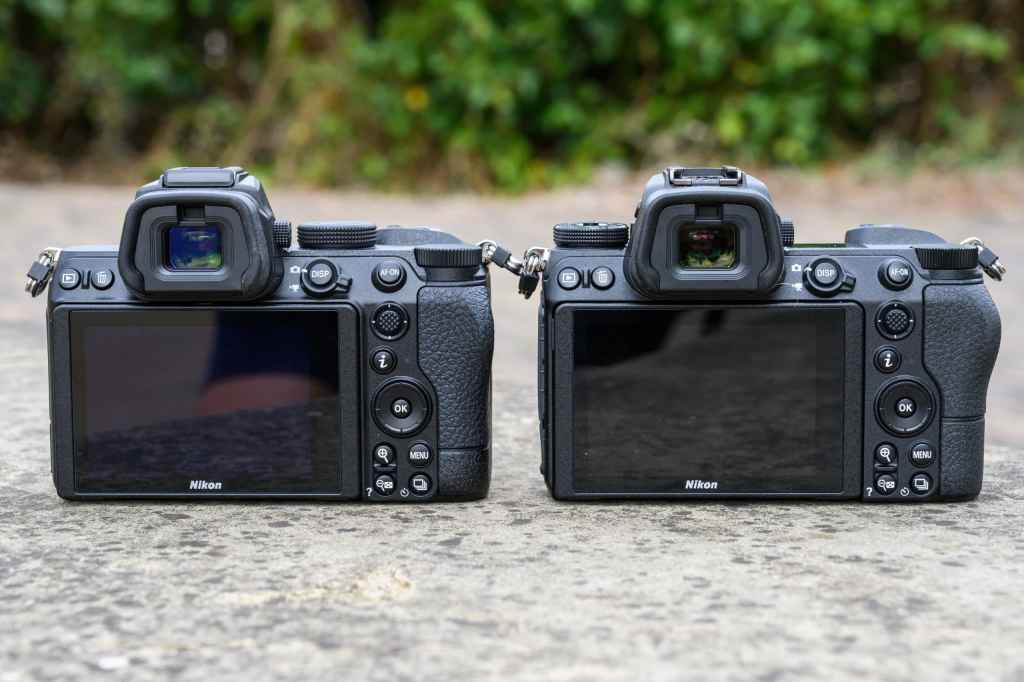
Aesthetics
It’s hard to spot many differences compared to the Z6 II and Z7 II when you look at the Z5 directly from the front. It has a similar deep rubberised grip, pair of customisable function buttons around the perimeter of its lens mount and flash of red beside the front command dial that’s long been associated with Nikon’s interchangeable lens cameras. The dimensions of the body are virtually identical, with the biggest difference on the top plate being the position of the mode dial, which replaces a top plate display.
Photographers who like glancing down at a top plate display to check settings before they shoot will find themselves referring to the informative information display on the screen instead. You can adjust the screen to display as dark on light or light or dark from the setup menu depending on user preference.
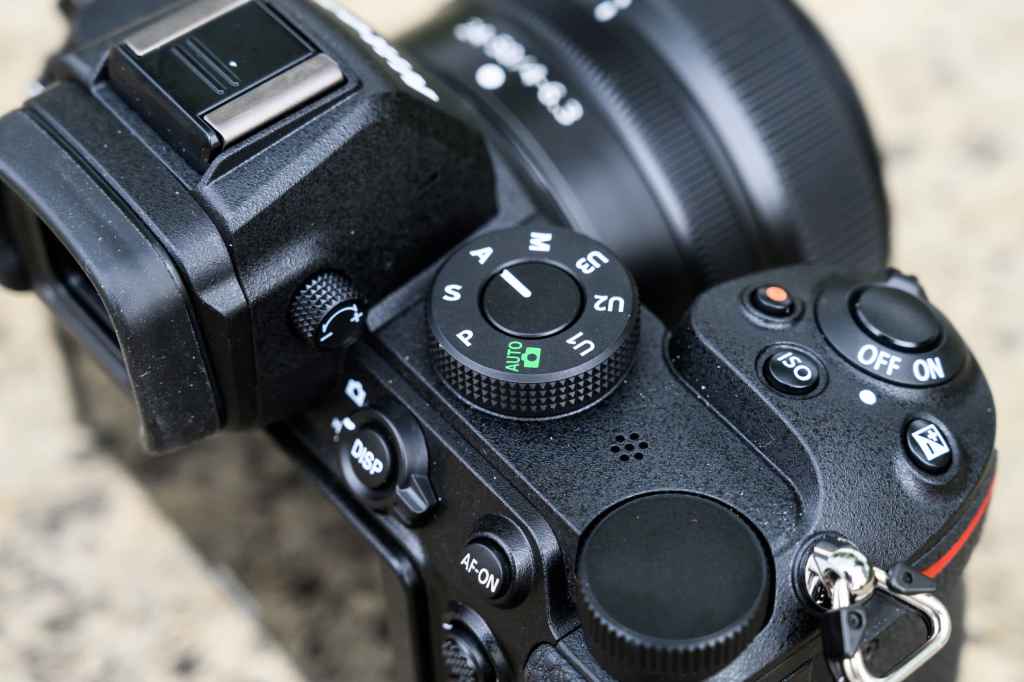
The mode dial doesn’t require you to hold a centre button to rotate it and positively locates at each mode setting. Meanwhile, the positioning of the movie-rec, ISO and exposure compensation buttons are unchanged. They’re conveniently positioned behind the shutter button that’s surrounded by the On/Off switch for intuitive start-up with your index finger.
SD card slots
After the criticisms Nikon received for releasing the Z6 and Z7 with a single XQD card slot, it’s good to see the Z5 equipped with not one, but two SD card slots, both of which support UHS-II memory cards. The role played by slot 2, which is staggered slightly below Slot 1, can be set to overflow, backup or to record JPEGs when raw files are being recorded to Slot 1.
The option to record stills to one card and video to the other is absent, however, it’s good to see Nikon listening to customer feedback and providing an essential backup facility on a camera of the Z5’s entry-level positioning.

Buttons and controls
At the rear, the Z5’s layout of buttons and controls is a carbon copy of the Z6 and Z7. This will be well received by anyone contemplating the Z5 as a backup body and means you can transition between all of Nikon’s full-frame mirrorless models seamlessly. You get all the dedicated buttons you need, including an excellent ‘i’ button that you can customise to pull up your most frequently used settings instantly.
Drive modes are loaded using a dedicated button below the menu button, and you get a joystick that falls naturally under your thumb for shifting the focus point around the frame. Its knurled texture also helps distinguish it from the AF-ON button above when the viewfinder is lifted to your eye.
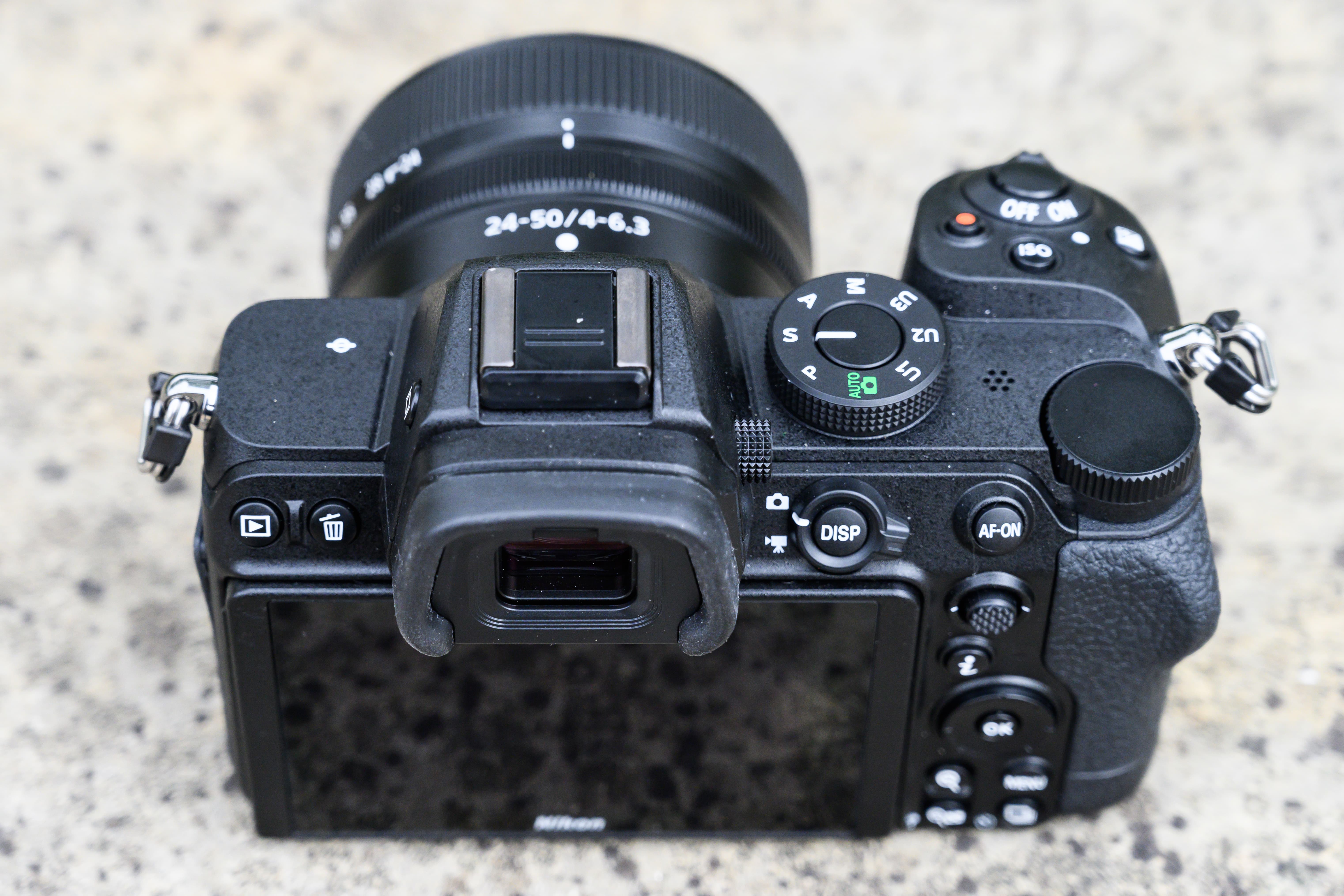
Just as we found when we reviewed the Z6 and Z7, the Z5 provides a sensational handling experience that makes it comfortable to hold and operate with smaller and larger lenses alike. It’s hard to imagine how Nikon could improve the handling characteristics of this camera.
With its weather sealing, metal chassis and high-quality construction, the Z5 is much more robustly made than its entry-level status implies.
Viewfinder
Another likeness between the Z5 and Nikon’s Z6 and Z7 models is the electronic viewfinder. The Z5’s 0.5in, 3.6-million-dot EVF with 0.8x magnification doesn’t match the resolution offered by some of the 5.76-million-dot electronic viewfinders we’ve recently tested, yet it’s a good example that faithfully displays exposure adjustments, white balance and colour in the preview image.
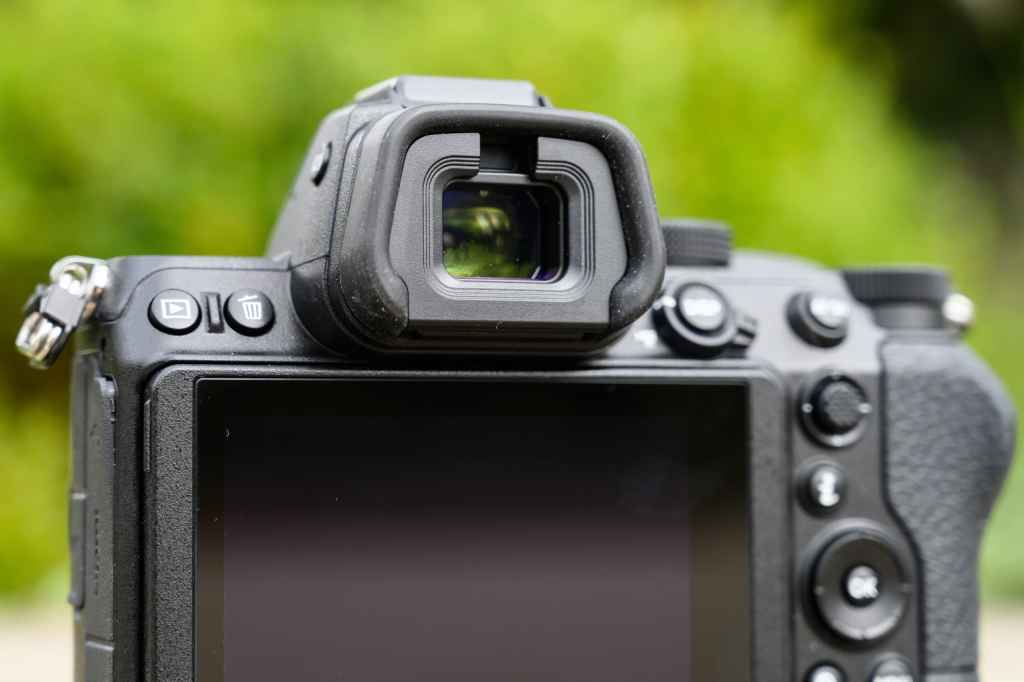
The Z5 provides an accurate preview of how aperture affects depth of field and a high level of sharpness in both normal viewing and at magnified settings. It’s also ideal for reviewing images when bright sunlight plays havoc with reflections on the rear screen. As with the rear screen, you can manually adjust the brightness and colour balance of the viewfinder from the setup menu. However, I found no reason to deviate from their default settings during my testing.
The EVF has a refresh rate of 60fps and switches between monitor and viewfinder displays quickly when the camera is raised or pulled away from the eye. Users can change the latter from the monitor mode selection button if you’d prefer to only use the EVF or screen rather than let it adjust automatically.
Touch-sensitive screen
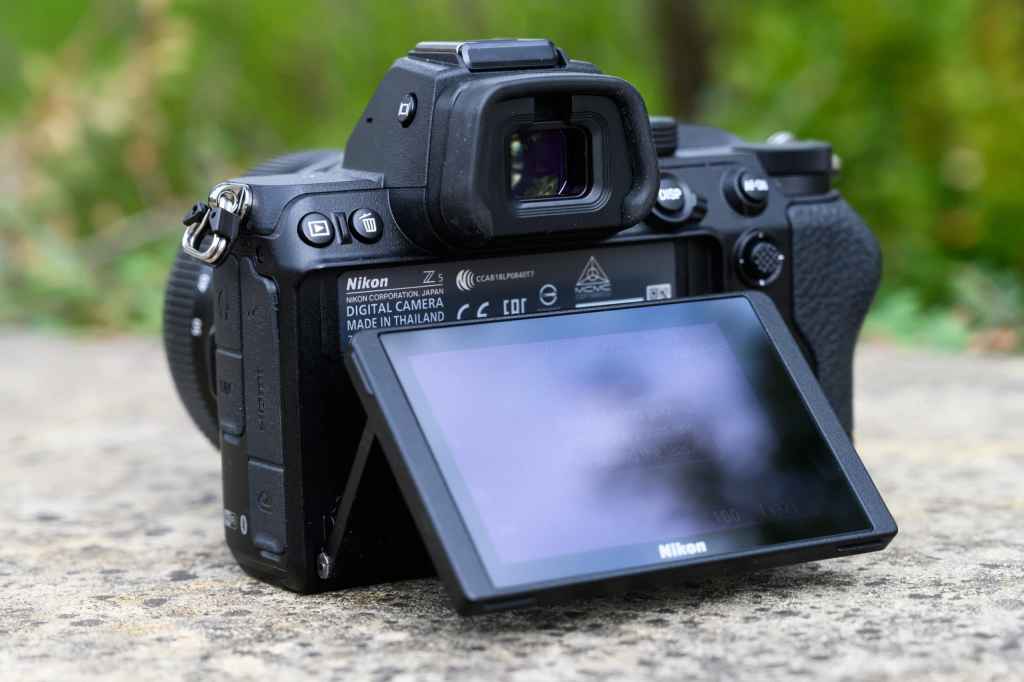
Complementing the viewfinder is a 3.2in touch sensitive screen. This can be tilted down by 45° for overhead shots and upwards by 90° to aid with low-level shooting. It does not allow you to pull it out to the side to aid with portrait shooting from awkward angles, however. Rivals such as the Canon EOS RP and Panasonic Lumix S5 have the advantage in this.
The resolution of the screen (1,040k-dot) is lower than the 2.1-million dot resolution you get on the more expensive Nikon Z models, but I only noticed a difference when comparing the Z5’s screen alongside the others at maximum magnification. It displays a clear and detailed preview in Live View, and you can’t fault the playback modes and sensitivity of the touch panel either. You can navigate your way through the main menu precisely with very light taps, and rain droplets on its surface do not affect it.
Autofocus
The Z5’s focus put in an admirable performance in the test. It’s quick to lock on to near and far subjects, with its red AF target turning to green when it achieves correct focus. I did find it was quite easy to lose track of the AF point on the rear screen when you set the AF area mode to pinpoint AF or single-point AF and you’re working in bright conditions outdoors.
I put this down to the boundary lines of the AF target being fairly thin. To reacquaint myself with its position, I found myself nudging the AF point around the frame on a few occasions. The AF target can be shifted diagonally across the frame as well as up/down and left/right. With all the AF points active it takes 2.3secs to shift the AF point from one side of the frame to the other compared to 1.6secs when every other point is selected.
The Nikon Z6 II is the better choice for photographers who regularly shoot high-speed action or sports. The Nikon Z6 II has the ability to shoot 7.5fps faster. Saying that, it’s good to see the Z5’s focusing keeping apace with speedy subjects. Its focus performance is on a par with its high-end Z-series cousins. Face and eye detection is useful when shooting portraits, though this is one of the few things that cannot be added to a function button. The option has to be accessed via the autofocus settings from the custom setting menu.
Users can select which eye they’d like the camera to focus on with a flick of the joystick. The same applies when you set the camera to animal detection. Anyone who enjoys photographing their pet should take advantage of animal detection. When it comes to recording movies, however, Nikon’s eye detection isn’t as advanced as Sony’s. You will notice eye detection is disabled when you enter video mode.
- Interested in close-ups and nature? See our Top Macro Photography Tips
Performance
The Z5 behaves like the Z6 II and Z7 II in that it’s quick to start up, and instantly responds to button presses, dial turns and adjustments made using the touchscreen. There wasn’t any time during use where the camera interrupted my shooting, or prevented me capturing the shots I wanted. Nikon DSLR users tempted by the Z5 as an upgrade will immediately feel at home navigating the menu. It’s easy to relate to, and everything is laid out similarly, from the photo shooting menu through to the setup and retouch menus.
For those not familiar with Nikon, the Z5 isn’t a daunting camera to pick up and use. The Auto mode returns good results in the hands of novices who’d like to simply point and shoot with minimal user input. There is everything you could want at your fingertips to take manual control as your ability and experience grows.
Matrix metering
The Z5’s matrix metering rarely misjudges scenes and exposes well for dim and bright conditions alike. There were only a few cases where I opted to dial down the exposure by -0.7EV to preserve highlight detail. If you find the camera is producing results that are a touch too cool for your liking in bright, sunlight conditions, it’s likely the camera’s white balance is set to the Auto A0 setting.
The Auto A1 and Auto A2 settings are intended to keep the overall atmosphere of the scene and preserve warm lighting colours respectively. If you mainly shoot outdoors, you may prefer to use Natural light auto, which tends to depict colour accurately.
Recording capacity
Loaded with a pair of 64GB SDXC UHS-II memory cards facilitating 280MB/s read and 250MB/s write speeds, the Z5 showed it’s capable of recording just shy of 100 raw files in its continuous high (4.5fps) shooting mode before its buffer needed a breather. If you’d like to shoot at a slower speed, there are several options.
The burst speed can be set to shoot between 1fps and 4fps from the continuous low drive mode. Shooting raw and JPEG (Fine) at 4.5fps saw the Z5 record 99 frames before the limit of its buffer was reached. I expected it to shoot for longer with the image quality set to JPEG (Fine) only. Instead, the buffer had to be given a few seconds to clear after 99 frames before more could be taken.
Bluetooth pairing
Pairing the Nikon Z5 with a mobile device and setting it up to automatically ping images across via Bluetooth is straightforward and reliable. This will be a relief to Nikon users who’ve previously struggled with Nikon’s early SnapBridge efforts. It’ll even continue to send images across one by one after the camera is switched off. It took around 20 seconds between firing the shutter and the image appearing in the app and the camera roll. To select specific images you’d like to download or remotely control the camera directly from the app, you’ll be prompted to enable the camera’s Wi-Fi.
Remote mode
In remote mode, you get a live view display that can be viewed in the portrait or landscape orientation. There are options to adjust exposure variables and move the focus point. The app is fairly basic, and one thing to note is there’s a momentary delay between pressing the shutter button and the picture being taken. As a result, it won’t be ideal for all types of shooting scenarios. To upload images to social media platforms such as Instagram, it’s recommended to select the auto download 2MP option.
IBIS system
Testing the Z5 with a variety of Z-mount lenses, including the Nikkor Z 70-200mm f2.8 VR S, showed that the IBIS system does a commendable job of counteracting shake associated with handheld photography. It plays an important role in ruling out jittery handheld movements when shooting video from stationary positions too. I was impressed by how well it compensated for shake when zooming and panning.
With the Z 70-200mm f2.8 VR S, I managed a high hit rate of sharp handheld shots as slow as 1/10sec at 200mm. With the 24-50mm kit lens, which isn’t stabilised, I was able to shoot sharp shots at the wide end as slow as 1/2sec and 1/5sec at 50mm.
Image mode options
Users get the choice of three image sizes when the Z5’s image area is set to FX. As well as the Large (24.2MP) setting, there are Medium (13.6MP), and Small (6MP) options to choose from. Switching the image area over to DX applies a 1.5x crop of the sensor. You can therefore use DX to get closer to distant subjects, albeit at reduced resolution. This came in handy at a game of cricket, where I used the DX crop mode with the Z 70-200mm f2.8 VR S and captured 10.3MP images at up to 300mm. Medium (5.6MP) and Small (2.6MP) image sizes are also available in DX mode.

Intrigued to find out if there’s any difference between the images the Z5 outputs from its 24.3MP CMOS sensor and those from the Z6’s backside illuminated (BSI) 24.5MP sensor, I conducted several comparison shots using the same lens and settings.
The cameras resolve nigh on identical levels of detail at low sensitivity settings. Despite this, low-light testing between ISO 6400 to ISO 102,400 revealed the back-illuminated structure of the Z6’s sensor exhibits slightly less digital noise in its images at high ISO. It allows more light to be collected at pixel level by shifting metal wiring behind the light-receiving surface. This was most apparent when comparing dark shadowed regions of the same scene at 100% magnification. To be critical, I’d say the Z6’s low-light performance offers a one-stop improvement over the Z5.
In terms of dynamic range, the Z5’s sensor provides respectable leverage at lower sensitivity settings. It lifts dark-shadowed regions or underexposed areas without introducing intolerable levels of noise. While the Z6 does pip the Z5 in terms of its low-light performance, the Z5’s image quality will serve aspiring photographers and those transitioning from APS-C to full-frame very well indeed.
ISO and noise
The results of our diorama taken through the ISO range in a controlled shooting environment tell us that users of the Z5 can expect lovely clean, noise-free images between ISO 100 and ISO 800 when shooting in raw. Push beyond to ISO 1600 and ISO 3200 and you’ll notice noise appears. It can be remedied by applying a small amount of noise reduction during post processing. ISO 6400 and ISO 12,800 are useable, but you’ll notice fine detail starts to be encumbered by increased noise in the latter.
While I’d be prepared to shoot up to ISO 25,600 at a push on the Z6, I’d consider ISO 12,800 the upper limit on the Z5. I’d recommend users avoid ISO 51,200 and ISO 102,400 (Hi1.0) at all costs. These produce a green tinge and a reduction in colour saturation. As for the automated noise reduction the Z5 applies to JPEGs, it’s fairly aggressive and does smooth out fine textures and details beyond ISO 800. With this in mind, it’s preferable to reduce the high ISO noise reduction from normal to low.
Nikon Z5 Verdict
Nikon has become a major player in the full frame mirrorless market since entering it in 2018. The original Z6 and Z7 collected numerous accolades from its critics and have gone down a storm with photographers worldwide, so it’s not surprising to see Nikon taking the ‘if it ain’t broke, don’t fix it’ approach to designing its third Z-series model.
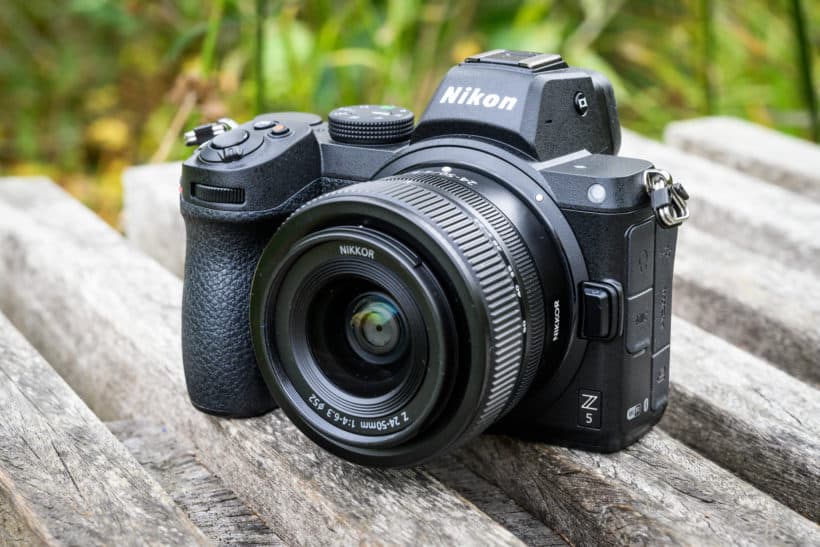
Touted as an entry-level model, the Z5 is much more advanced than this basic classification suggests. It’s comparable to the Z6 and Z6 II in terms of its build quality and handling, but by making a few alternations such as equipping it with a CMOS sensor, removing the top plate display and employing a lower-resolution screen, Nikon has been able to make it cheaper. The fact it accepts a pair of SD cards rather than a single costly XQD card and that it’s available as part of a bundle with a 24-50mm kit lens will appeal to photographers who feel like they’re ready to advance to full-frame.
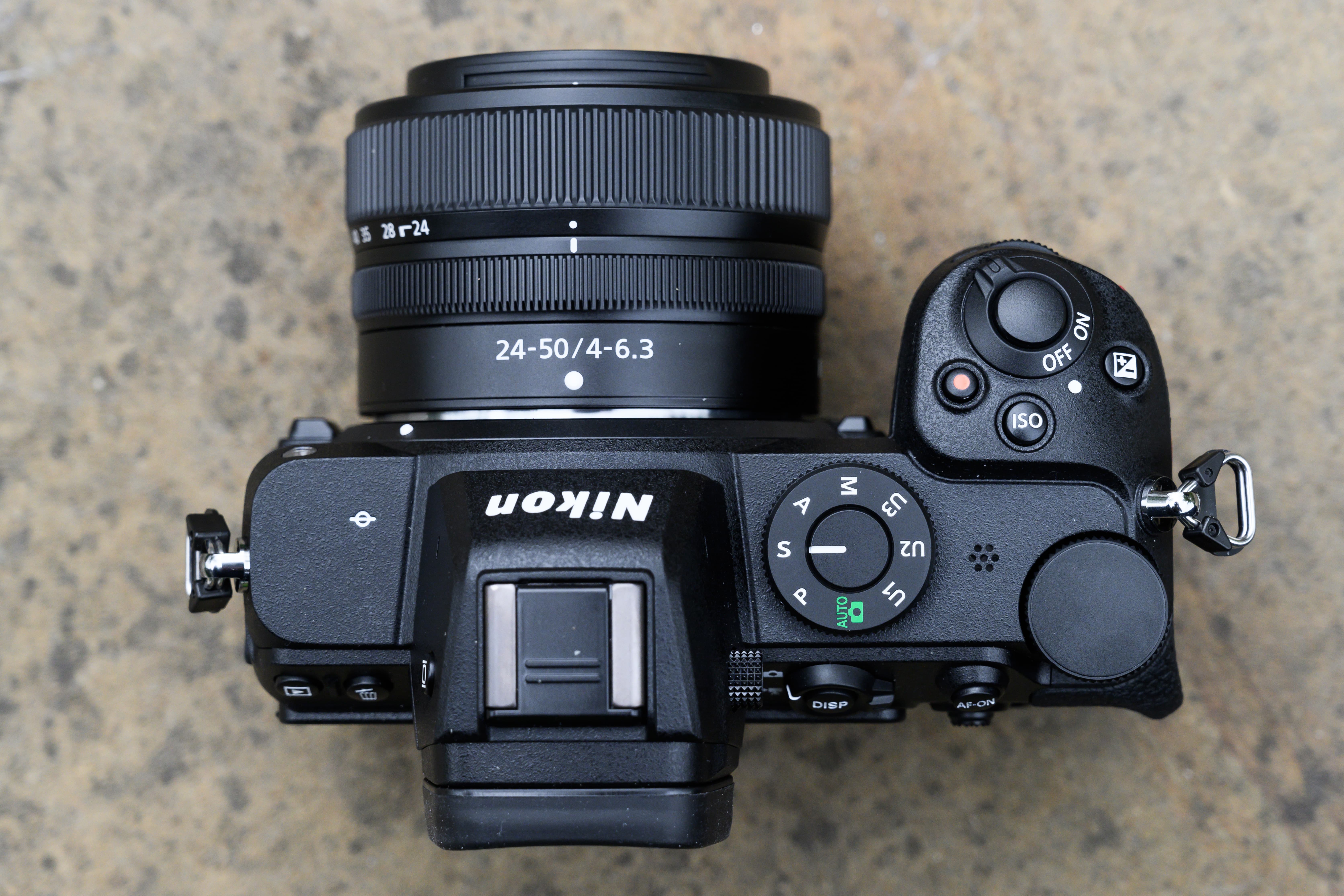
Price comparison
The bigger point, perhaps, is the price. There’s now a substantial cost difference between the Z5 and the next model up in the range the Z5II and the Z6 II. What’s more, current prices make the Z5 highly competitive against the Canon EOS RP (cheaper, but older and not as good) and the Panasonic Lumix S5 – excellent video capabilities but now succeeded by the Lumix S5 II.
A more contemporary rival is something like the Canon EOS R8. While it’s a bit more expensive, this camera benefits from up-to-date features. It has deep-learning autofocus that can recognise and track subjects using sophisticated AI. It also has a broader ISO range and a more sophisticated video spec. The Z5 does fire back with dual card slots and a much nicer viewfinder. Weighing up the pros and cons of the two makes for a tricky decision. The older camera does better than you might expect.
What about Sony? Well, Sony’s decision to jack up the price of the Sony A7 IV means the Z5’s closer rival is probably still the Sony A7 III. In the UK, the A7 III is similarly priced at $1,298 / £900. The Z5 has much nicer ergonomics, while the A7 III is far superior when it comes to autofocus, particularly with Sony’s famous Eye AF. Again, a close one to call; with no obvious winner, it’s mostly down to personal preference.
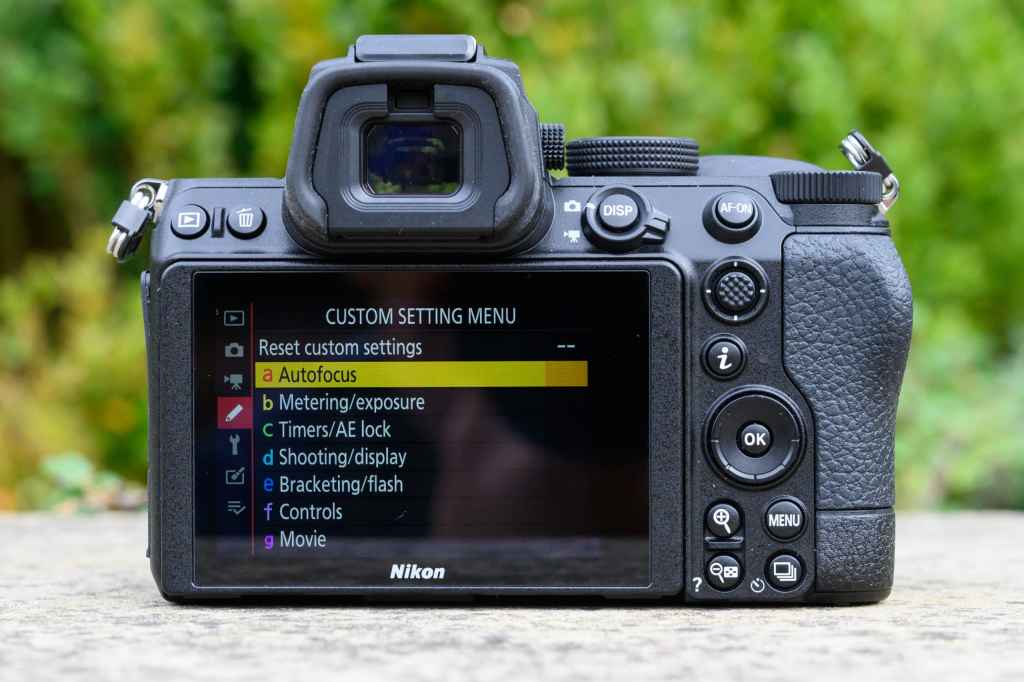
Still, it’s easy to get lost in the weeds of comparing cameras. Taken on its own terms, the Nikon Z5 remains a remarkably capable and reliable full-frame camera. It has a quality feel, a solid set of specifications and a price point that adds further to its appeal, especially to current Nikon owners looking to upgrade. What’s more, it’s an affordable entry point into the Nikon Z ecosystem as a whole, and a steadily expanding range of good lenses. We’re looking forward to seeing what its successor can do. In the meantime, the Nikon Z5 remains an excellent choice of full-frame mirrorless camera.
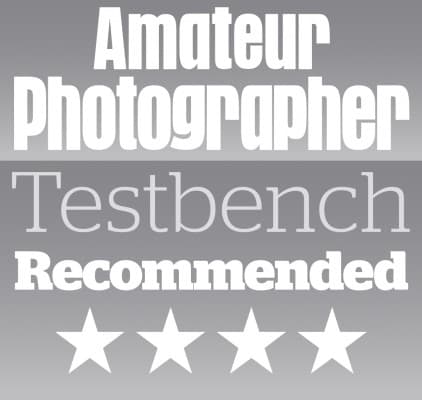
Find more great full-frame cameras in our guide to the best full-frame mirrorless cameras, or take a look at the best Nikon mirrorless cameras, as well as the best Nikon Z-mount lenses.

